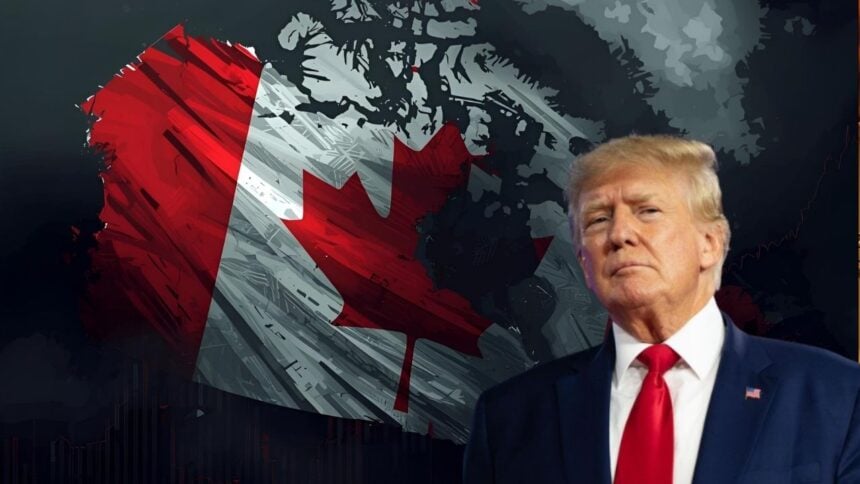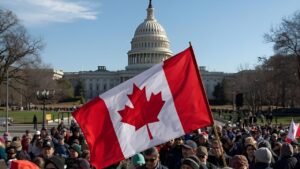President Donald Trump’s tariff program is testing Canada’s trade-reliant economy and tempering growth expectations across North America.
Executive orders issued in early February placed new levies on Canadian imports under the International Emergency Economic Powers Act, then subsequent actions refined the mix by setting a baseline regime and country-specific measures.
The White House later modified the scope in September to formalize how reciprocal tariffs and trade agreements interact with the new framework.
Together, the steps have raised costs for cross-border supply chains that have long stitched together the region’s manufacturing base.
Canada’s real GDP contracted at a 1.6% annualized pace in the second quarter, the first quarterly decline since 2023, as exports fell and business investment softened.
Statistics Canada noted a broad drag from goods trade even as domestic demand held up.
The Bank of Canada’s July Monetary Policy Report flagged materially higher tariff uncertainty than at the start of the year and warned that forecasting has become more difficult as trade rules shift.
The central bank’s scenario analysis showed growth improving later in 2025 only if tariffs de-escalate.
Ottawa has tried to cushion the blow without abandoning leverage. On September 1 the federal government removed many counter-tariffs on U.S. goods but kept measures on steel, aluminum and automobiles in place while negotiations continue.
Officials also published a running list of U.S. products that remain subject to Canadian counter-duties so firms can plan around the moving parts. The policy balancing act has spilled into other files.
In September, Carney hits pause on EV mandate as Canada balances trade, jobs and tariffs, a signal that industrial goals will be paced alongside trade realities.
Metals producers face higher costs and shifting orders as both sides keep duties active in steel and aluminum.
Automakers must navigate vehicle rules of origin and non-compliant shipments that can trigger penalties, raising pricing risk just as electric-vehicle investment ramps up. Consumer goods have not been spared either.
Earlier actions included new tariffs on lumber and furniture, which complicate home-improvement supply chains and could creep into retail prices if currency moves fail to offset the impact.
RBC Economics says targeted duties are hurting specific Canadian industries yet should not derail the broader North American outlook if relief arrives through exemptions or sector deals.
TD Economics marked down Canada’s medium-term growth path a touch, citing tariff spillovers among the drags. S&P Global Ratings also projects below-trend Canadian growth into 2026.
South of the border, U.S. output looked firmer in the spring with second-quarter GDP revised to a 3.3% annualized pace, but that strength partly reflects a different policy mix and a later pass-through of trade frictions.
Washington has set out procedures to align reciprocal tariffs with future agreements, leaving room for carve-outs if talks succeed.
Ottawa, for its part, has been pruning countermeasures while backstopping exposed regions and industries.
British Columbia’s C$1 billion tariff relief program for small businesses points to the kind of targeted mitigation that could spread if pressure persists.
Federal support aimed at saving steel jobs underscores the same approach as officials seek to steady employment in trade-exposed communities.




















